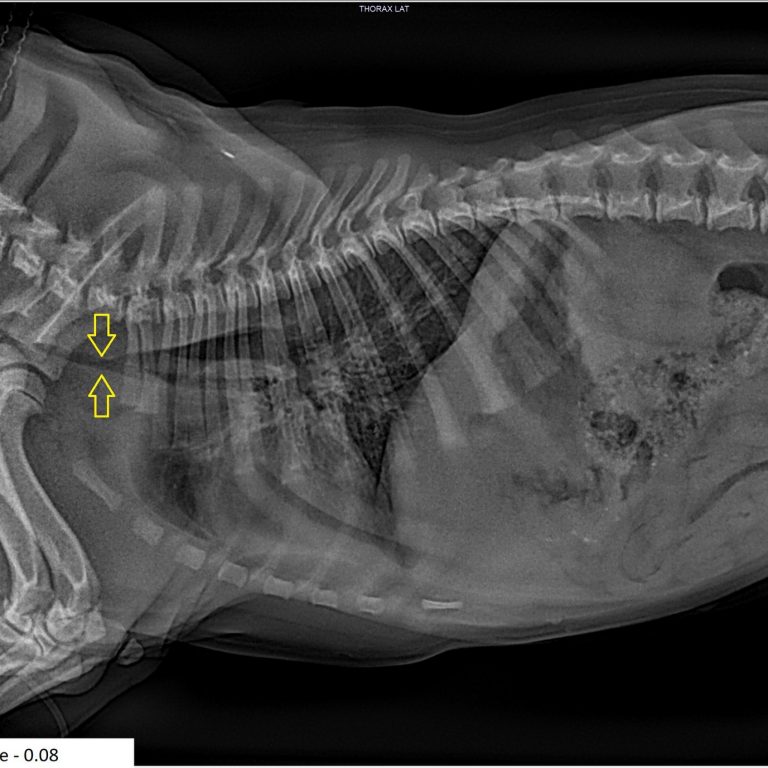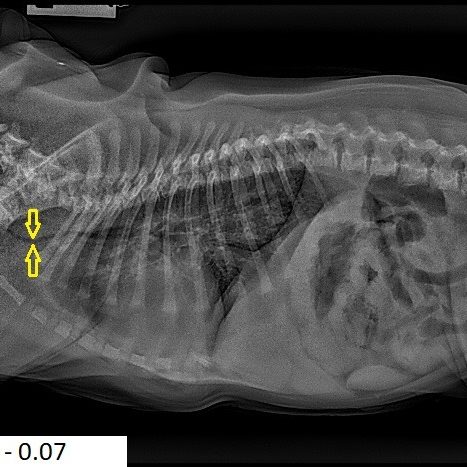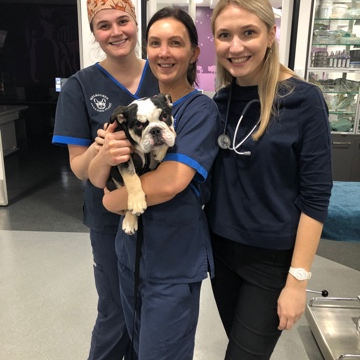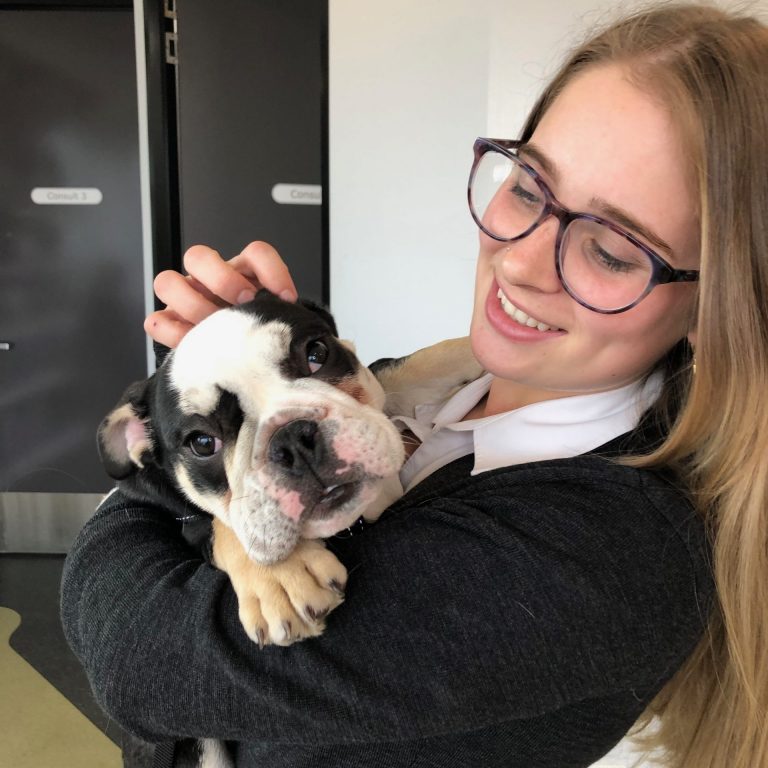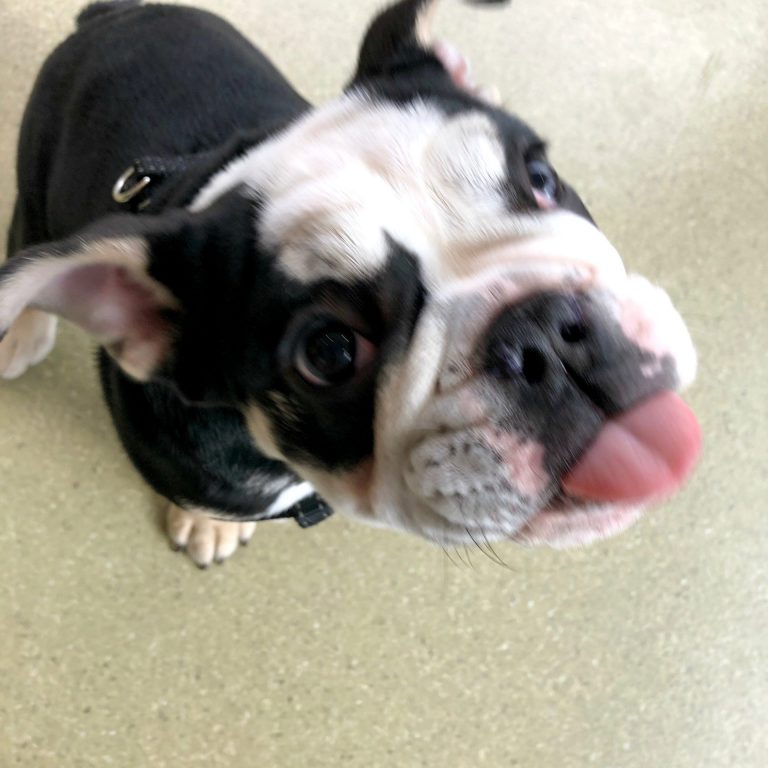A Tragic But Preventable Problem
We present three cases here but start by educating everyone that part of our charter to improve breed standards includes trying to significantly reduce this horrendous hereditary problem by simply screening any breeding dog prior to using for hypoplastic trachea.
This condition, extremely prominent in British Bulldogs in particular (up to 50% in some studies), causes immense suffering in many dogs, from euthanasia in puppies when extreme, to just increasing levels of respiratory concerns depending on the degree of hypoplasia an individual may have.
To understand this condition here is a quick anatomy lesson: The normal tracheal diameter should have a ratio of 0.20. That ratio is calculated by the width of the trachea as measured against the length of the thoracic inlet in any individual dog. So when we hear a dog has a ‘hypoplastic trachea’ we always ask:
What is the measurement?
You should know this exactly. It’s not enough to just say the trachea is hypoplastic, it should be either measured or at last communicated whether it is
- Mild
- Moderate or
- Severe
A trachea is considered hypoplastic if it’s ratio is less than 0.16. to 0.20 is a grey area and over 0.20 is excellent. Please see the examples below including Archie who has a normal width of 0.20. Compare the 3 severely hypoplastic ones pictured below.
The three cases discussed/pictured above are extreme. All puppies, all really struggling with bouts of aspiration pneumonia, and all diagnosed with extreme hypoplastic tracheas. Their measurements were 0.07 for two of them and 0.08 for one.
Generally speaking the recommendations for this is euthanasia, which is not unreasonable. Interestingly on an Australian veterinary surgical site recently we posed the question of what would be recommended in these cases. All the answers – some from specialists, was immediate euthanasia. No options of treatment were suggested. One thing we do know about these breeds is that they almost all develop significant soft tissue respiratory restrictions as time goes by due to their turbulent restricted airways, and all are significantly helped by improving these at 8-12 months.
However at 12-14 weeks, which all these cases were at presentation, is far too young to do that without needing a second surgery later in life. But when euthanasia is the only option, we are not against seeing what we can improve if there are significant concerns developing prematurely, due to the massively increased effort to breathe due to the hypoplastic trachea.
Theoretically, if we can minimise the effort required and maximise the space available for getting oxygen, could they lead some sort of comfortable life? We do know that as individuals grow the adult tracheal ratio may improve a little (as per Winnie’s case).
With a best guess prognosis we offered the following to all three of our clients:
– A 75% chance they will not survive surgery or get a result that is consistent with comfort post surgery and would still need to euthenase (as they are currently facing).
– A 25% chance they may improve enough to be comfortable to give more time, however long that may be.
All three clients wanted to give any possible chance a go.
Upon general anaesthesia and examination to see if there was anything we could improve before considering euthanasia, interestingly all three puppies already had massive secondary restricted pharyngeal changes that normally don’t occur to 6-24 months: Everted laryngeal saccules, huge tonsils, extremely long palates, and thickened, along with their stenotic nares. No wonder they were OK as extremely young puppies despite their hypoplastic tracheas but were now gasping for air with secondary pneumonia by just 12 weeks of age, as these secondary changes at the back of the pharynx further exacerbated the lack of room to get oxygen.
As there was something we could try we proceeded with restricted airway correction despite the poor prognosis as understood and accepted by their owners. So far these are the results:
Rosie: Despite surviving surgery, and the very next day Rosie’s owner reporting how wonderful she was, not having been as quiet or active or happy since the day she got her at 8 weeks, over the next 4-5 days she slowly deteriorated to the point of needing to make a decision for her best interest.
Winnie: 18 months later Winnie is a wonderful happy dog enjoying life as much as most! At her repeat surgery at 12 months her trachea now has a ratio of 0.12. Still terrible, but far better than 0.08, a 50% improvement as she grew.
Billie: 4 weeks post recovery Billie is currently heading the same way as Winnie, fingers crossed she now has a chance to grow a little into her trachea the same as Winnie above.
Please see the after photos and videos (https://youtu.be/7cfykI5I4j4) of Billie just 4 weeks post surgery.
👩⚕️ VET DISCUSSION 👨⚕️
Any pup continually presenting for suspect aspiration pneumonia, especially BB, or significant airway restriction, consider immediate x-ray for hypoplastic trachea and also consider an early 5 point restricted airway reconstruction. Many surgeons still may not thin palates, or remove everted laryngeal saccules or tonsils.
We feel to give them the best chance as much room as possible needs to be made at the back of the pharynx, hence strong consideration to all 5 aspects, not just palate shortening and nares widening, should be considered. Even if presented with severe hypoplastic trachea with severely dyspnoeic patients, please consider correction as an option rather than only euthanasia, so long as the guarded prognosis is well understood. But most importantly please join our professional push here on BAHA ( ) to recommend to breeders to screen for this condition prior to breeding.
Any questions from veterinarians or owners alike are most welcome.
We will also ask any breeders following our facebook group if they would support screening prior to breeding to rule out this concern, or what the reasons would be for not screening. We feel the same x-ray to look for this could also be used to go a long way to rule out the other terrible afflictions these breeds get such as hemivertebrae and their associated back concerns.


